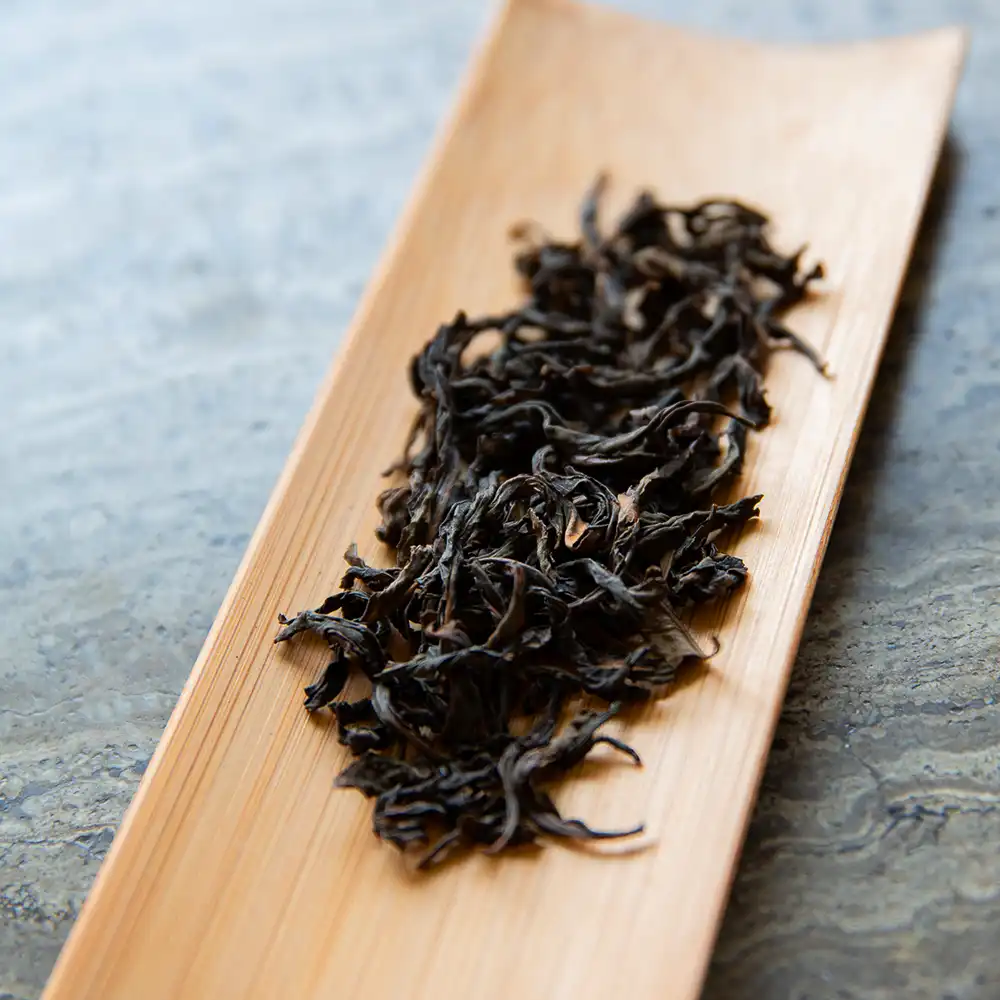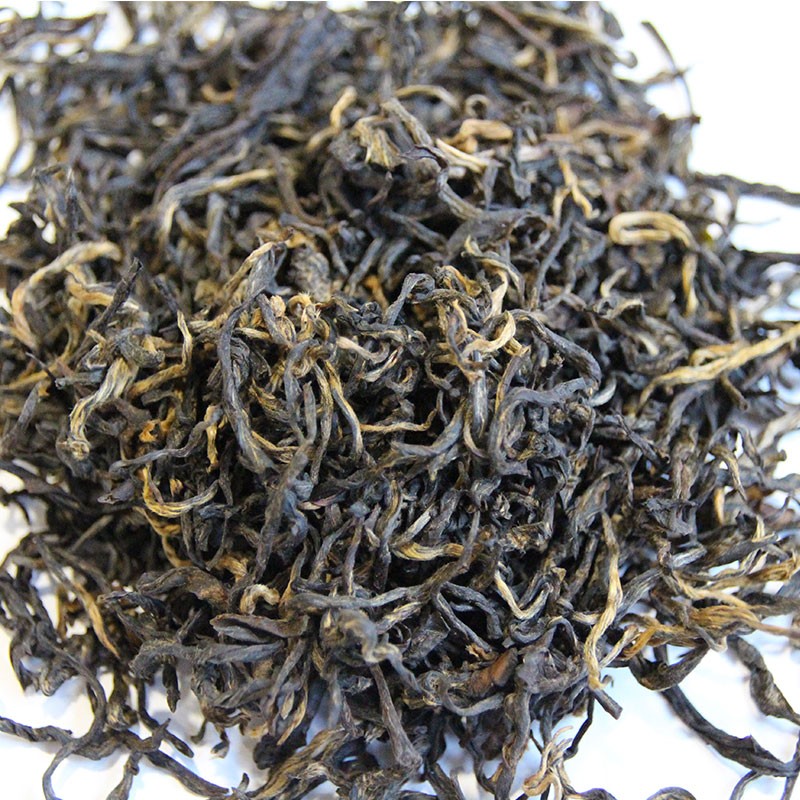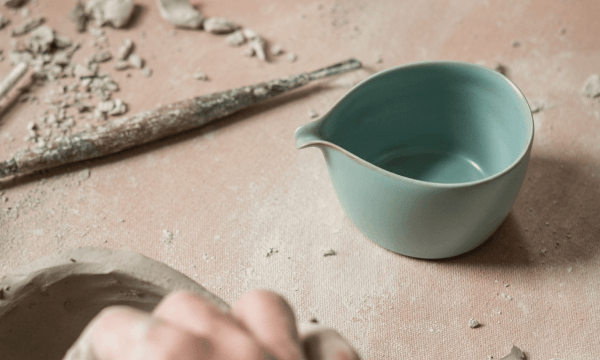Tea Legend, tea and its surroundings, GONG FU CHA
Wuyi Mountains: the incredible teas of this region
A special region that produces teas of the highest standard with unique organoleptic characteristics due mainly to terroir: we are in the Wuyi Mountains, or Wuyishan, in the Chinese province of Fujian. We take you with us on a little journey of discovery, telling you about the most famous types of tea that are produced here with their history and characteristics.
Wuyi Mountains: a special terroir
In the far northwest of Fujian, almost bordering Jiangxi Province, there is a mountainous area that is very renowned for tea production: these are the Wuyi Mountains. Becoming a UNESCO World Heritage Site in 1999, this mountainous area gives rise to one of China’s most beautiful natural landscapes: rock formations of volcanic origin, with their characteristic reddish color, rise up between the winding loops of the Jiuqu Xi River (“River of 9 Curves”), surrounded by crystal-clear waters and the fascinating ruins of ancient monasteries. A breathtaking view that enchants tourists from all over the world.
Think about the fact that the Han dynasty regarded the Wuyi Mountains as sacred , and Emperor Xuanzong (712-756, Tang dynasty) forbade fishing in these waters and the felling of trees. Under the Yuan Dynasty (1271-1368) the imperial tea gardens were moved to this magical place, and after 1300 the imperial family drank only tea from this protected area.
And it is precisely the soil on which the camellias of the Wuyi Mountains grow that makes the teas we now tell you about so unique.
The teas produced in the Wuyi Mountains area
Yancha – the rock oolongs of the Wuyi Mountains
The Wuyi Mountains are very famous for one type of tea in particular: yancha, or rock (cha) tea (yan). These teas, all high-oxidation oolongs, are in fact distinguished by their distinct mineral character due precisely to the soil on which they grow. We can divide these oolongs into 3 macro-categories, by virtue of how the soil is composed: Zhengyan (soil composed of 100 percent rocks), Banyan (soil composed of 50 percent rocks) and Zhoucha (tea that grows on the outer flat areas).
The word petricore, coined from the Greek terms “petra” and “ichor” (the fluid flowing in the veins of the gods), denotes precisely the flavor of wet rock, an unmistakable note of these oolongs that faithfully brings back to the taste the type of soil on which the plants grew: the greater the rocky component, the stronger the mineral hint that will envelop the palate when we taste the tea in a cup.
Another characteristic of yancha is the finalroasting, performed in the traditional way over charcoal-a step that gives dark, roasted notes and a remarkable depth of flavor.
What then are the most famous yancha in the Wuyi Mountains?


- Da Hong Pao (Great Red Robe): a much-loved and sought-after oolong, which we have already discussed in another article also telling you about the legends surrounding it. It is perhaps the most famous yancha, of which only 6 mother plants remain to this day (only 4 still produce tea): only the best tea masters are allowed to harvest in spring from the original trees, yielding up to a maximum of 400gr of tea per year. In order not to stress these last ancient plants and to be able to produce quantities that would meet market demands, the cultivation of new-generation camellias, born from cuttings by planting branches and shoots of these original shrubs, was initiated. These new camellias, masterfully cultivated and processed, yield truly fantastic teas.
Da Hong Pao has large, rolled leaves that are brown in color with rust-red hues. The liquor in the cup is amber in color and the flavor is marked by roasted notes of nuts, floral hints and a finish of cocoa or in some cases just dark chocolate. It is a tea with intense minerality, which when prepared in gaiwan with the method of gong fu cha holds many infusions with the same leaves. - Shui Xian: This oolong, whose name means “water spirit” or “daffodil,” is a tea with a wide aromatic range. It has dark brown rolled leaves with reddish highlights, which in the cup give a bright liquor between golden and amber. On the palate it surprises with sweet notes of butter cookie and toffee, hints of orchid , and hints of roasted and praline almonds.
- Rou Gui: from Chinese, “cinnamon.” Rou Gui is in fact an oolong that combines the minerality of yancha with a spicy note of cinnamon. The leaves are rolled, bright dark brown in color with auburn highlights, and the flavor of the liquor has roasted notes of almonds and nuts, floral hints and a creamy sweetness that is almost reminiscent of vanilla pudding or ripe banana.
- Shui Jin Gui: literally, “golden water turtle.” Another wonderful high-oxidation oolong from the Wuyi Mountains, with large leaves between brown and mahogany. In the cup the notes are warm and enveloping: hints of black bread crust, burnt caramel, cocoa, nuts and spices. Definitely a great tea for warming and cuddling in the winter season.
The red teas of the Wuyi Mountains
Red tea was born very late, around 1560, and precisely in the Wuyi Mountains region. It can be said to have been produced almost by mistake-a fortuitous unforeseen occurrence, given that it is perhaps the best-known and best-loved type of tea in the West, with considerable commercial success and high export levels. Hardier than green and white teas, it was in fact well suited to long sea voyages, reaching the shores of Europe without losing its qualities.


Just by virtue of the fact that the first red tea in history came from this area, people in the West began to call it generically “Bohea,” a mispronunciation of the Chinese word “Wuyi,” which English sailors and traders returning from those distant lands could not pronounce.
Let’s look specifically at what the most famous red teas are and how they came about.
- Lapsang Souchong: probably the best known of the Chinese red teas and one of the most intense in aroma and flavor. It is in fact the first red tea produced in China, and its origin is shrouded in legend. The origin of the name probably comes from an English mispronunciation of the terms lapushan xiaozhong, meaning “small leaf variety (xiaozhong) from Mount Lapu (Lapushan).”
The most widely accepted hypothesis about how this tea came into being tells of aninvasion of the village of Tongmu by some soldiers, who sought shelter for the night by making bedding out of the very tender tea leaves collected during the day and spread out to wither. When the soldiers left in the morning, the villagers wondered how they could save that now ruined tea: by sleeping on it, the soldiers had crushed and unintentionally “rolled” it, leading it to oxidize, in addition to the fact that the leaves were now soaked with the unpleasant smell of their bodies (there is some doubt about the level of personal hygiene of the armed forces at that time). What to do, then? The solution was asmoking process on pine wood, which gave the leaves a decidedly unusual character that was incredibly popular, especially with foreign traders.
Another hypothesis is, more simply, that the tea was originally supposed to be processed as a classic green tea but something went wrong during processing, leading the leaves to oxidize completely. Again, to repair the mistake, the tea was dried with a light smoking on pine wood, resulting in a completely new product than usual.
Whatever the actual origin of Lapsang Souchong, it is certainly a tea that has depopulated in Europe and even Russia: its bold flavor, with smoky and sweet notes at the same time, make it a unique tea. - There is also an unsmoked version of Lapsang Souchong, less well known in the West, called Zhengshan Xiaozhong, or “small leaf variety (xiaozhong) from the original mountain (Zhengshan)”: it is an extraordinary tea, expressing in the cup all the sweetness and delicacy of the best Chinese red teas with fruity and floral notes, as well as a hint of cocoa to envelop the palate.


- Jin Jun Mei: translated from Chinese, it means “beautiful golden eyebrow” and is a red tea from wild shrubs that grows at about 1,800 meters above sea level in the Wuyi National Nature Reserve area. It is a very recent tea, discovered in the early 2000s and immediately shot to the top of the charts of China’s most expensive and sought-after teas.
Masterfully crafted at the village of Tongmu, it has small, long, thin leaves delicately rolled to form slender brown curls with many golden buds. In the cup, the amber liqueur reveals wonderful complexity, with sweet notes of cocoa, rose and lychee and an almost moving softness on the palate. A gem from the Wuyi Mountains that absolutely must be tasted.
Have we intrigued you? Try our oolong teas and our red teas: you can find them in our online store!






